Drum Cafe | An Excellent Restaurant at LUMA, Arles B+
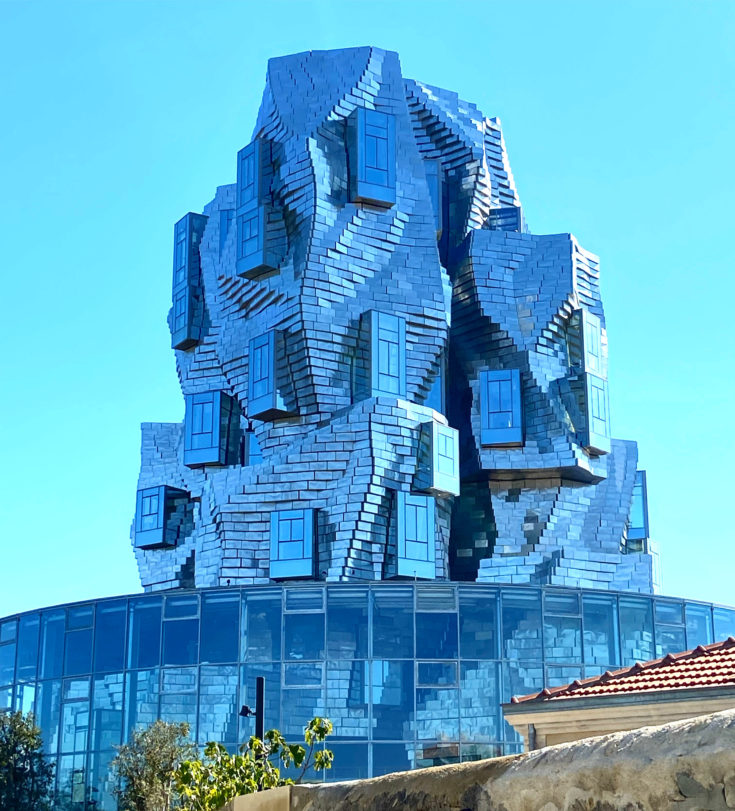
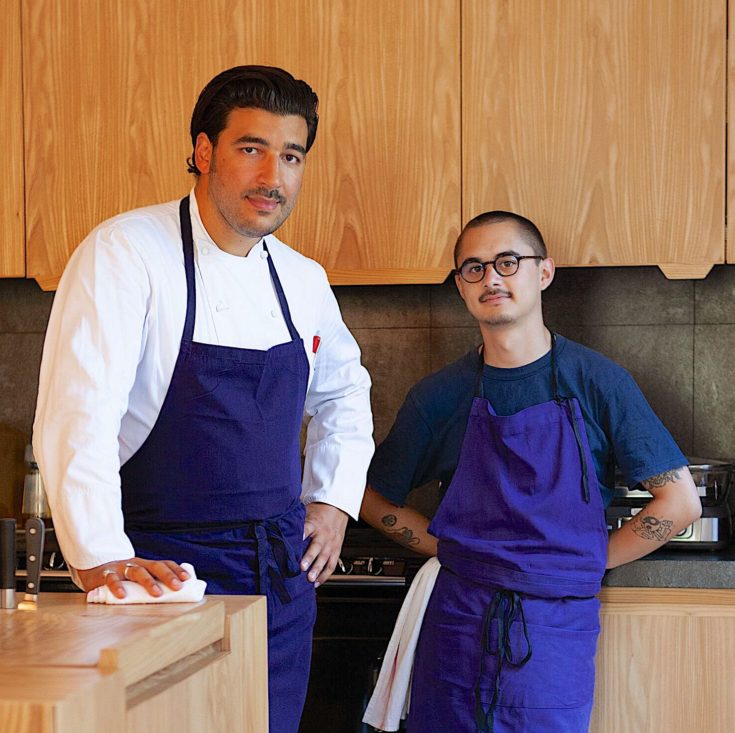
Chefs Pierre Toitou and Cyril Pham
The new Drum Cafe at the LUMA Foundation in Arles is an excellent example of how good a museum restaurant can actually be when someone cares about serving good food instead of the usual bland industrial food-service catering too often found at museums. The food at the Drum Cafe is so delectable that it’s very much coming here for a meal even if you’re not planning to the visit this new contemporary arts complex, which was recently created from a decommissioned rail yard and train-carriage maintenance workshops.
My curiosity about this place was first aroused very early in the morning a few weeks ago on a train from Nimes to the airport in Marseilles when I looked up from my book just long enough to catch a sudden thrilling glimpse of the new Frank Gehry designed metal-clad tower that has become the emblem of the LUMA Foundation. It came and went so unexpectedly that my reaction was all instinct–backdropped by the morning sky, the tower was intriguingly strange and oddly beautiful.
I’ve been reading about LUMA ever since its creation was announced by Maja Hoffmann, the philanthropist heiress to the Hoffmann Laroche pharmaceutical fortune, but hadn’t yet found the time to go during a year made so busy by the publication of my new book MY PLACE AT THE TABLE: A Recipe for a Delicious Life in Paris (Mariner Books). Then I learned that Pierre Toitou, whose cooking I’d loved when he was at Vivant and Deviant in Paris, had been cast with Cyril Pham as the first chefs for the museum’s new restaurant, the Drum Cafe.
So on a beautiful Indian summer Saturday in Provence, Bruno and I headed south for lunch and a visit to the museum.
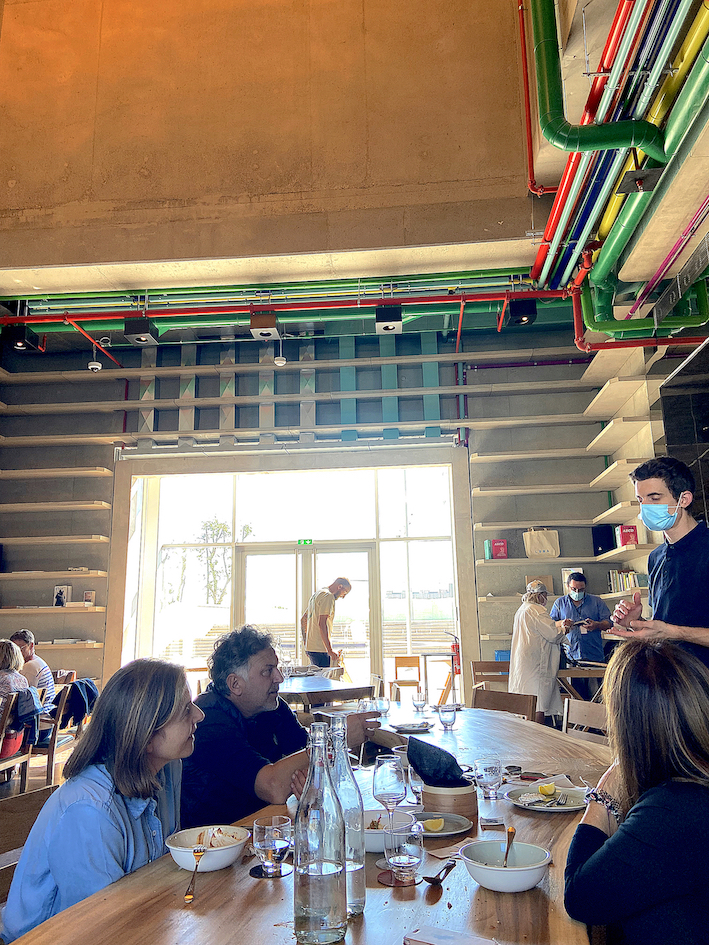
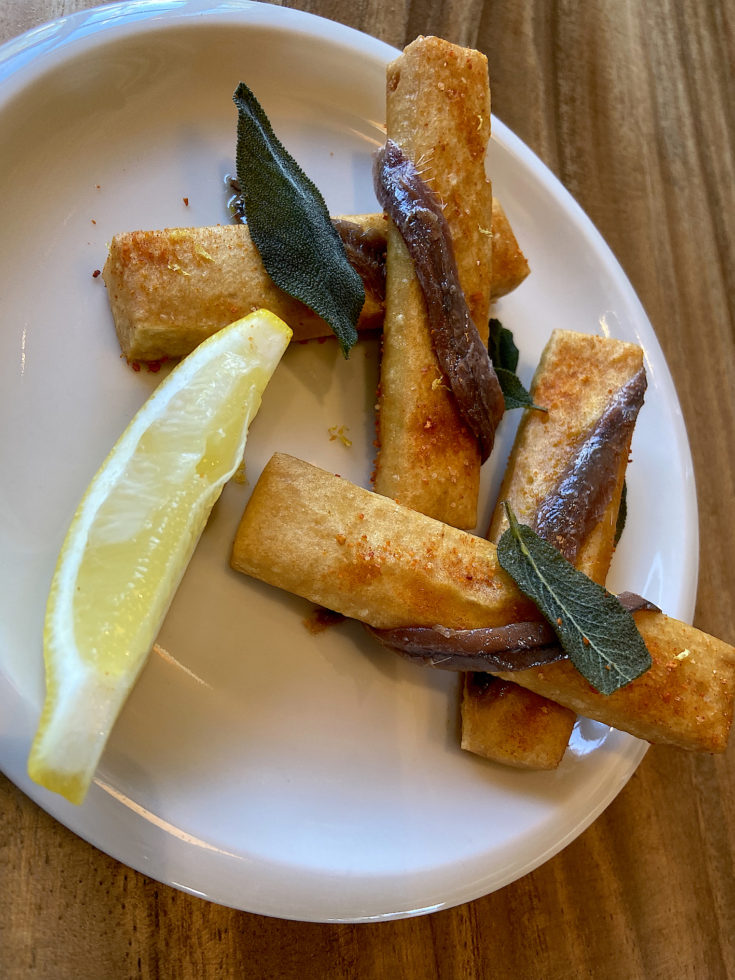
The restaurant is located on the ground floor (rez-de-chaussée) of the Frank Gehry tower on the grounds of the LUMA Foundation. Coming through the door, there’s a bar and a few tables in a dark foyer, while the main dining room has a single large horse-shoe shaped table at the bottom of an atrium lined with book shelves and decorated by polychrome pipes overhead that reminded me of the Centre Pompidou; all of these years later, this architectural feint is still fresh and fun, too.
Seated, we immediately ordered two glasses of a delicious organic white wine made in the Camargue from Viognier grapes and a plate of panisses with cured anchovies and fried sage leaves to nibble on while we studied the menu. Ever since I first ate a panisse (a chickpea flour bar) in Nice as a backpacking student a very longtime ago, I’ve never been able to get enough of them, and the ones served here were very good.
The menu was fascinating, too, since Toitou is such a gastronomic vagabond. As I over-heard him explaining to a neighboring quartet, “My father (Jean Toitou, founder of the Paris fashion label A.P.C.) is a Tunisian Jew and my mother is Russian and Norman. Growing up we ate a lot of Japanese food at home, because my parents love it and traveled to Japan often, but we never had French dishes like boeuf bourguignon, because no one knew how to cook them.” Toitou has cooked everywhere from the Hotel Plaza Athenee (Alain Ducasse) in Paris to London (Sketch by Pierre Gagnaire) to Uruguay. He’s also previously done a Pop-up in Arles with Arrmand Arnal of La Chassagnette and is an avid traveler.
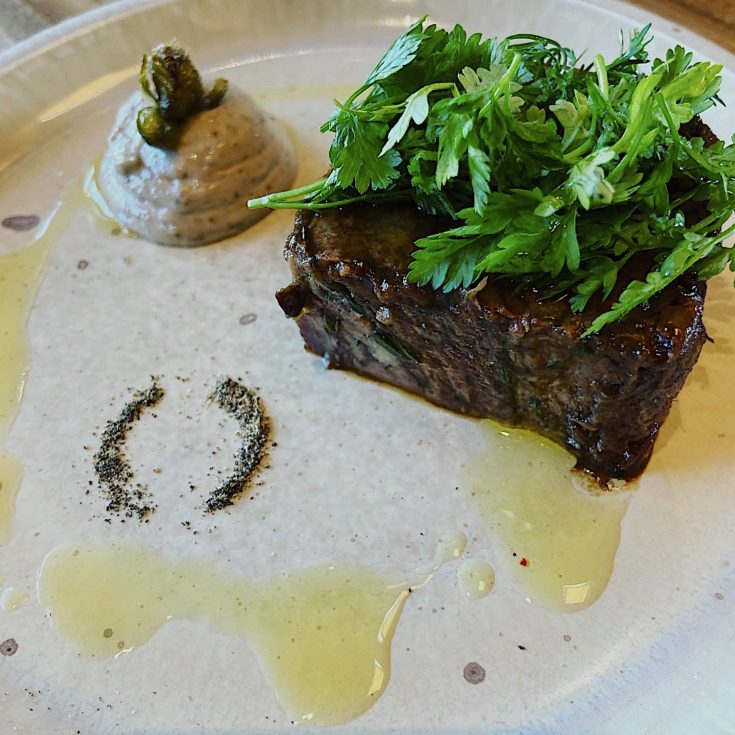
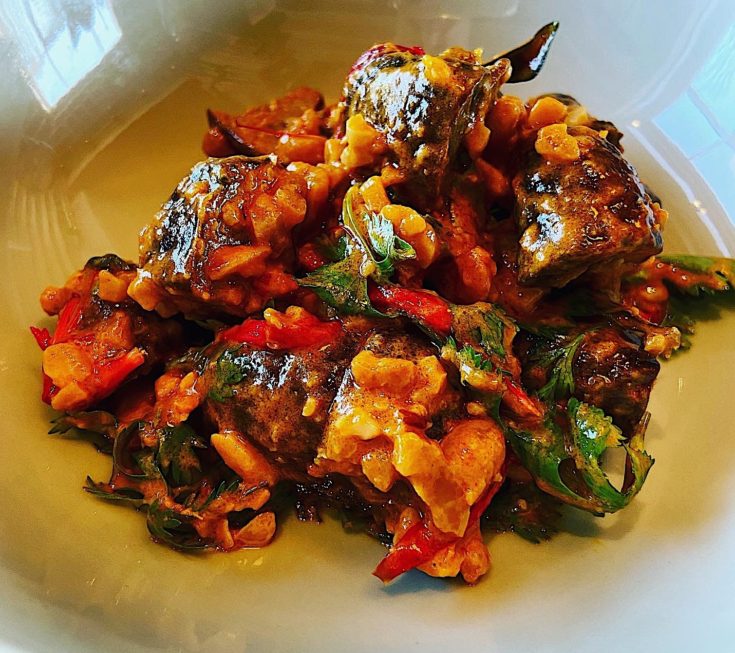
All of this comes through in a brief but intriguing menu of mostly Mediterranean dishes that are brilliantly jolted by techniques and ingredients from other cultures. These small-plate dishes that are meant to be shared are sort of exactly what many people want to eat right now as we tentatively emerge from the COVID pandemic. To wit, this food is fresh, seasonal, health, straight forward and booming with umami, or just the cure for people who’ve become bored by the limits of their own skills in the kitchen after cooking non-stop for months.
Finally, we settled on an oxtail terrine (presse de boeuf) with black olive mayonnaise and a salad of fresh herbs and mushrooms in Satay sauce with chili oil and lime leaves. If the rich and brilliantly succulent terrine was profoundly French in the best traditions of rock of ages bistro cooking, the mushrooms registered like some sort of ecstatically good street-food dish you might come across in Bali. One way or another, both plates were beautifully made, generously served and deeply satisfying.
It was pretty obvious that word-of-mouth was working, too, since many of the other people having lunch around us were curious and gastronomically adventurous locals, or the sort of people who support inventive and creative chefs in smaller towns and rural settings all over France.
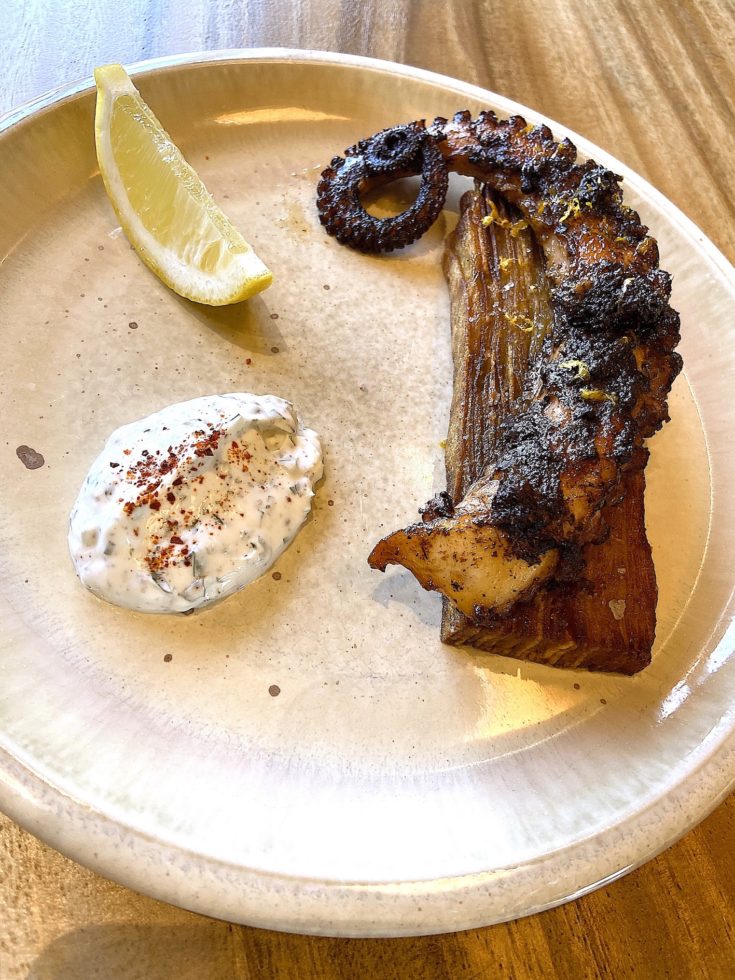
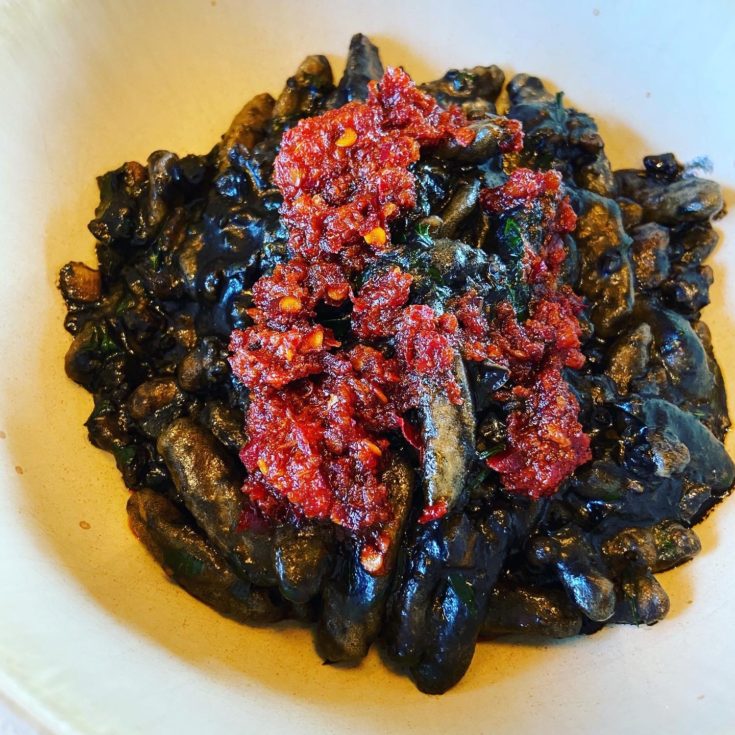
As depicted above, our main courses might look a bit ferocious but both dishes were outstanding. Homemade cuttlefish ink cavatelli with a cuttlefish ragu was brightened by a pepperoncini fired red blaze of melted ‘Nduja, the soft sausage from Calabria that’s one of my favorite kitchen helpers. (Why? When I don’t have time to cook a sauce as rich and ruddy as the succulent cuttlefish ragout, ‘Ndjua adds a lot of flavor to pasta just tossed with olive oil, capers and a sprinkling of smoked salt.) Frankly, I also liked the way that this dish cocked a snook at the usual conventions of food styling in the age of Instagram, too. What Toitou seemed to be reminding us is that taste should always trump fiddly prettiness and that food should be allowed to look like, well, food.
The plating of the grilled marinated octopus tentacle posed on top of a beautifully made potato cake also seemed intended to titillate with a first impression of gruesomeness. One way or another, it was excellent, since the octopus has been marinated to give its meat a creamy tenderness and the char added wonderful flavor to the dish, as did an Indian condiment, raita, which is yogurt with chopped cucumber, pepper and herbs. The potato cake was a highly engineered version of pomme Anna, minus the large amount of butter usually found in this dish. Instead, the potatoes had been finely sliced, neatly formed into a loaf and baked, to create a garnish I could happily eat everyday.
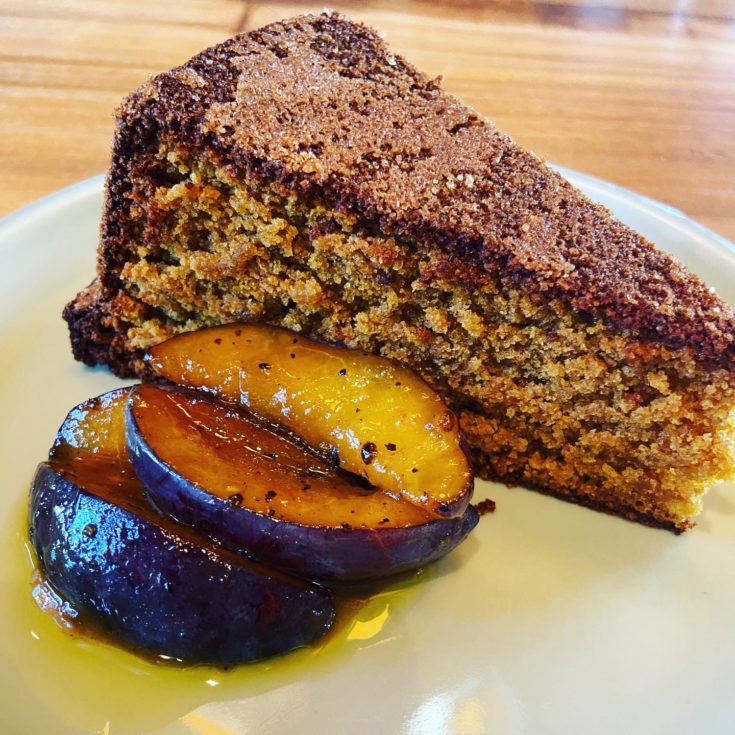
Since we were planning to visit the galleries in the LUMA tower after lunch, we decided to share a dessert, a slice of tarta de Santiago. It presented as a sort of delicious spiced cake made with ground almonds and was garnished with prunes in spiced syrup.
Curious about its origins, I poked around we got home and discovered that it’s a recipe from Galicia in Spain that dates back to the Middle Ages. Translated into English, its name means ‘the cake of Saint James,’ a reference to the Camino de Santiago pilgrimage route that passes through Galicia to culminate at the city of Santiago de Compostella. The top of the cake is often decorated with powdered sugar and an imprint of the Cross of Saint James, but the version served at the Drum Cafe was naked, ecumenical and delicious. Interestingly, the European. Union granted the Tarta de Santiago a PGI (Protected Geographical Indication) in 2010; this means that any qualifying tarta must be made in Galicia and contain at least 33% almonds.
Pierre Toitou is in residence at the Drum Cafe until January 2022, when a new chef(s) will arrive, because the idea of the Drum Cafe is to host a regularly changing roster of different chefs in its kitchen, an increasingly popular restaurant concept everywhere.
N.B. The Drum Cafe is open only for breakfast and lunch.
Drum Cafe, LUMA Arles, Parc des Ateliers, 45 Chemin des Minimes – 33 Avenue Victor Hugo, Arles.Tel. (33) 04 65 88 10 00, Average 45 Euros. Open Wednesday to Monday 10am – 6pm, Closed Tuesday. Lunch menu served from noon to 3pm. Reservations strongly suggested via website: https://www.luma.org/en/arles/visit-us/eating-and-drinking-on-the-parc-des-ateliers/drum-cafe




